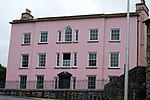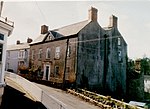Laugharne Castle
Castle ruins in WalesCastles in CarmarthenshireGrade I listed buildings in CarmarthenshireGrade I listed castles in WalesLaugharne ... and 3 more
Registered historic parks and gardens in CarmarthenshireScheduled monuments in WalesUse British English from May 2015

Laugharne Castle (Welsh: Castell Talacharn) is in Laugharne, Carmarthenshire, Wales. The castle, located on the estuary of the River Tâf, was originally established in 1116. It was rebuilt as a Norman stronghold. There have been many alterations since then, including becoming a Tudor fortified manor house in the sixteenth century. It changed hands twice during the English Civil War, being eventually captured by Parliamentary forces in 1644.
Excerpt from the Wikipedia article Laugharne Castle (License: CC BY-SA 3.0, Authors, Images).Laugharne Castle
Wogan Street,
Geographical coordinates (GPS) Address External links Nearby Places Show on map
Geographical coordinates (GPS)
| Latitude | Longitude |
|---|---|
| N 51.769722222222 ° | E -4.4619444444444 ° |
Address
Laugharne Castle
Wogan Street
SA33 4SP , Laugharne Township
Wales, United Kingdom
Open on Google Maps








